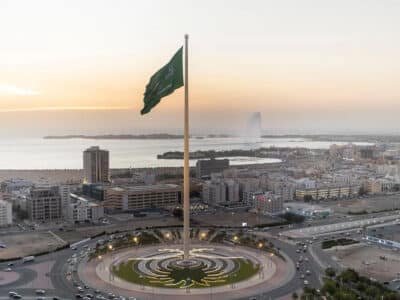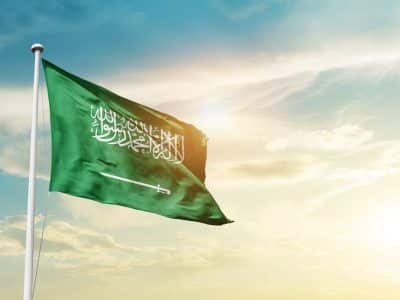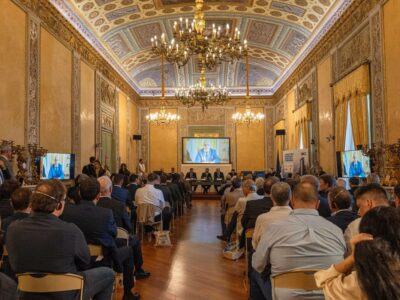Qatar’s energy resources have given it one of the world’s
highest per capita incomes, a futuristic urban skyline and enough clout to host
the 2022 soccer World Cup. But its wealth may not be enough for the arid state
to achieve an even more ambitious goal: becoming largely self-sufficient in
food.
Like other oil-rich, water-poor Gulf states, Qatar has been
investing in large areas of farmland overseas to ensure access to food
supplies. The agricultural arm of Qatar’s sovereign wealth fund, Hassad Food,
has bought land in Sudan and Australia, and has announced plans to spend
hundreds of millions of dollars on agricultural projects in countries including
Kenya, Brazil, Argentina, Turkey and Ukraine.
But in contrast to the other Gulf states, Qatar also aims to
produce most of its food domestically, by spending massively to boost crop
yields and convert semi-desert into agricultural land.
Qatar’s Crown Prince Sheikh Tamim bin Hamad bin Khalifa
al-Thani issued a decree this year to organise the Qatar National Food Security
Programme (QNFSP), tackling “one of the most pressing challenges that
Qatar is facing”.
“Today, there are 1,400 farms in Qatar and they will
increase to 3,000 farms with the new plan,” said Fahad Bin Mohammed
al-Attiya, the QNFSP’s chairman.
“We anticipate that domestic food production, if new
technologies are applied and the efficiency system enforced, can easily reach
60 percent of our market needs. We anticipate that domestic demand can be met
by 60 to 70 percent.”
Qatar, like the five other wealthy Gulf states, imports up
to 90 percent of its food requirements. It has a population of about 1.7
million people, an estimated 20 percent of them Qatari citizens and most of the
remainder foreign workers.
Attiya said implementation of the food security programme
would start in January 2014, after a period of preparation. “The
implementation period is 10 years. By 2024 we should have a fully operating
system.”
It is a seductive vision, and Qatar’s vast wealth as the
world’s top liquefied natural gas exporter will allow it to mobilise the best
technology and equipment. But many economists and agricultural experts say
Qatar’s plans do not make economic sense — and that there is little need for
them, given the small size of the population.
“They don’t have that much land they can put into
production; much of it is desert. And Qatar has a very small population,”
said Abdolreza Abbassian, senior economist at the United Nations’ Food and Agriculture
Organization in Rome.
“They import almost the entire cereals that they need
for domestic consumption, something like 200,000 tonnes a year, which they
cannot really produce. What they produce domestically is minimal. I don’t
really see much prospect.”
Abbassian suggested the country might be better off focusing
its investment on agricultural land in more temperate climates.
“Given the size of the country and the amount of
imports which is rather modest, I would be surprised if it’s really such a need
to resort to such an investment, which is far more capital- and
labour-intensive,” he said. “Why would they do that rather than
purchasing land globally?”
Qatar’s environment is hostile to agriculture, characterised
by extreme heat, water scarcity and high soil salinity. Average precipitation
in depth is just 74mm per year, compared to the United Kingdom’s 1,220 mm, FAO
data shows. Only about 1 percent of Qatar’s total land area of 11,590sq m is
arable, according to the FAO.
Also, many experts do not see a strong need for Qatar to
increase its food security. Although it is located in a volatile region of the
world, its huge foreign currency reserves and comparatively small population
mean it could probably arrange adequate new sources of food imports fairly
easily in an emergency.
Article continues on
next page…
“When designing their food security strategies,
countries with relatively low agricultural potential such as Qatar may be
better advised to look beyond fostering domestic agricultural production,”
said Clemens Breisinger, research fellow at the International Food Policy
Research Institute in Washington.
“Given Qatar’s low levels of food insecurity risk and
low agricultural potential, it is important to carefully assess the opportunity
costs of the investments planned under the QNFSP and to potentially consider
alternative options for a food-secure Qatar, and a more food-secure
world,” he said.
In 2008, Saudi Arabia abandoned a push to achieve
self-sufficiency in wheat, concluding that it was simply too expensive and
wasteful in using domestic water resources. The country now plans to be 100
percent reliant on imports of wheat by 2016.
Mahendra Shah, food security advisor to the UN and director
of international planning at Aquiess Rainaid, a company which develops rainfall
technology to fight drought, said the drive to produce wheat domestically using
underground water had caused environmental damage in Saudi Arabia.
“The underground water reservoirs are saline and
severely depleted. This is an example of an ecological disaster that will take
decades to recharge and clean up the aquifers.”
But Qatar has shrugged off the example of its larger
neighbour, showing the same ambition and faith in its financial power that led
it to make other controversial but ultimately successful investments, including
its World Cup bid, its creation of international television broadcaster Al
Jazeera, and its backing of the rebel side during last year’s Libyan
revolution.
Qatar’s farming methods include open-field agriculture,
greenhouse production, and hydroponics, a soil-less culture technology which uses
less water and land and can yield up to 10 times the crop grown in an open
field.
“The basket of products has to be diverse,” the
QNFSP’s Attiya said. “The products will be mainly fruits and vegetables,
and we’re looking at cereals as well, fodder, livestock and fisheries.”
One of the prototype farms, the Al Sulaiteen Agricultural
and Industrial Complex (SAIC), is located in the desert a short drive from
Qatar’s capital Doha.
“We are producers of vegetables, seasonal flowering
plants and outdoor plants. We have one of the largest landscape projects in
Qatar, with 40 hectares of land,” said Mahmoud Refaat Shamardal, SAIC’s
agriculture sector manager.
SAIC, which started vegetable production in 2001, is growing
tomatoes, cucumbers, eggplants and other vegetables through a combination of
greenhouses, hydroponic systems and regular farming. It supplies supermarkets
and hotels.
“We use artificial soil to produce the vegetables. With
this system we can save around 50 percent of water, and water is a very
important factor here in Qatar,” said Shamardal.
Article continues on
next page…
Qatar now produces around 23 percent of its requirement of
vegetables. They are grown by 56 percent of the country’s farmers and take up
11 percent of its cultivated farm area, according to the QNFSP.
The country’s aquifers are already severely depleted, Attiya
said. But the QNFSP plans to obtain agricultural water from seawater
desalination using solar parks, and only keep aquifers as strategic water
reserves.
“Once we have achieved solar desalination, we will ask
the farmers to stop using the aquifers,” he said.
While Qatar’s technology is impressive, however, experts say
it will be difficult to apply the techniques to a full range of crops,
especially cereals.
“Certain commodities like fish, eggs and poultry can be
produced locally with an increased level of self-sufficiency,” said food
security advisor Shah.
“Aquaculture can be used for fish, controlled
environment production for poultry and eggs, but when it comes to cereals, the
scale of the water required – this has to be carefully thought through.”
Attiya said total costs for the QNFSP had not yet been
calculated. While Qatar does not lack money, it is hoped that private sector
involvement will make the programme efficient and responsive to consumer
demand.
“The funds will come both from the private sector and
the public sector. All the regulatory functions, the research and education,
policy, legislation and regulation, that will be entirely funded by the
state,” said Attiya.
“The rest, in terms of the development of the power
plant, desalination plant, and all the financing of all the different upgrades
of the farms, that will happen by the private sector.”
Attracting enough private businessmen may be difficult,
however, especially if they are restricted in where they can sell their produce
under the terms of the QNFSP.
“It is very important to note that the food security
plan in Qatar is subject to zero export policy,” Attiya said.
“If anything is produced in Qatar, that production
cannot be exported for reason of protecting our natural resources. Because of
the water involved in producing food, a country like Qatar that is very dry
cannot export water through food.”







